This puzzle requires learning about the .png file format.
The image tells you exactly how to get started: look at the chunks.
The chunk types are:
IHDR (standard .png header);
IDAT (the actual image data);
hint x4 (not standard!);
idat, idaT, idAt, and idAT (not standard!);
ones, poke, bits, read (not standard!);
and IEND (standard .png ending marker).
"hint" is a pretty suggestive chunk name. In fact, the bytes can be read as ASCII. They read (in order):
- "Hello, solver! If you've reading this message because you opened the file in a text editor or similar, you might have a rough time (it's theoretically doable but would take forever; you'll need at least some code support at some point)."
- "If you're reading this message because you're successfully working with the chunks, you're optimally positioned to proceed. One way or another, you're going to want to look at all the chunks in this file."
- "Your next goal is to generate 4 new .png files. Ignore the last 4 strange chunk types for now; you'll find out what to do with them later."
- "A note on checksums: in order to generate a *valid* .png file, you'd need to compute checksums called CRCs. You could learn how to do this, but some programs (like Paint and Windows Photo Viewer) ignore CRCs, so you can use any four bytes as the CRC as still load the result into these programs."
Since IDAT is the standard chunk type for .png data, if our goal is to make 4 new .png files, it makes sense to use the chunks with case variations on IDAT.
For each of these, create a new .png whose IDAT is idat, idaT, idAt, or idAT.
To be a valid .png file, the CRC would need to change, but as the hints say, several programs will open .png files even with bad CRCs.
So you can either compute the correct CRC once the chunk type is renamed to IDAT, or you can ignore this step, and you'll probably be able to find a program to view the new images.
These images are:
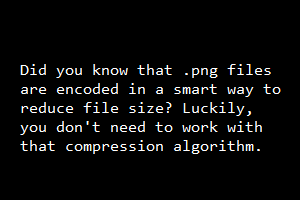
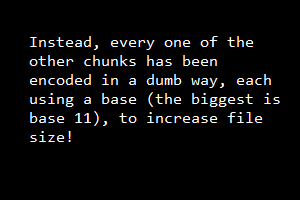

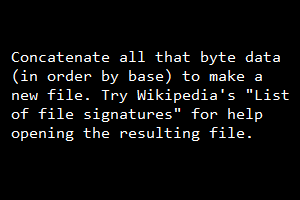
Now it's time to understand those last four chunks:
- ones (base 3): Converting the bytes to base 3 and concatenating yields long strings of 1s separated by a single 2. Simply count each string of 1s.
As promised, the first string of 1s (and hence the first byte) is 80.
- poke (base 5): Converting the bytes to base 5 and concatenating yields chunks of 26 characters, all 1s but with a single 2, separated by 3s and occasionally 4s.
Each sequence of 26 characters can be read as the letter in the position corresponding to the 2, with 3s as letter separators and 4s as word separators.
Doing so yields pokémon from the first 255 (with MISSINGNO as 0).
Note that slight variations on standard names are necessary; for example, NIDORANM and NIDORANF are used instead of overloading NIDORAN, and PORYGONTWO is used instead of PORYGON2.
As promised, the first pokémon is SUNKERN, which is #191.
- bits (base 10): Converting the base to base 10 yields subsets of 1 through 8 separated by 9s.
Treat these subsets as the bits that are "on" in a byte, with bit 1 the leftmost bit and bit 8 the rightmost.
This bit labeling convention is not standard, but it's the one that makes the first byte 206.
- read (base 11): Converting each byte to base 11 yields a number that looks like base 10 from 1 to 26, or AA.
Use the AA bytes as word breaks, and read the others as letters.
Each of these spell out the name of a number ZERO through TWOHUNDREDFIFTYFIVE, which we then convert back to a byte.
As promised, the first byte is EIGHTYEIGHT.
Concatenating all these chunks of data yields a file whose first two bytes are PK, indicating that it's a zip file.
This zip file has one file in it, called almost_done.png:
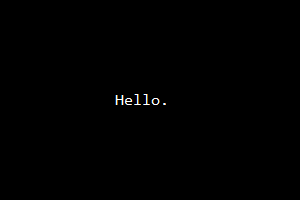
This .png file is way too large for its minimal content (176 kilobytes!), so there must be more to it.
Indeed, it's time to look at chunks again, where now we have chunks named "rrrr", "gggg", and "bbbb".
Each of these chunks has 60000 = 300*200 bytes in it, and all our .pngs have been 300 x 200.
We can therefore use these chunks as the red, green, and blue channels to give a 300 x 200 image:
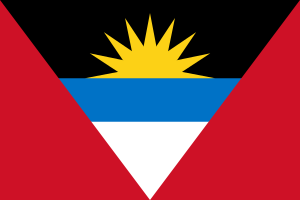
This is the flag of ANTIGUA AND BARBUDA, which is the answer to the puzzle.









